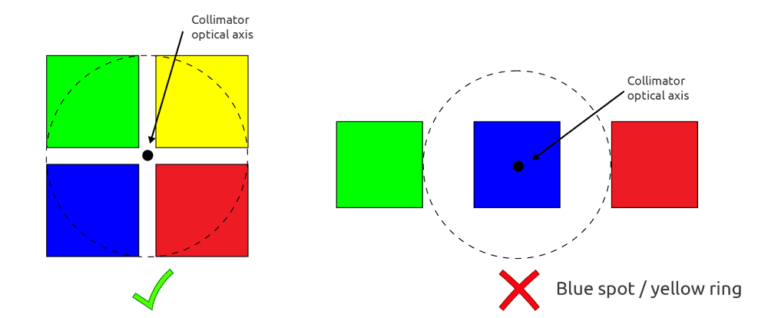Home > Technical Support > How to define an optimal LED layout for color mixing?
Reading time : 2 minutes
Last update : may, 2023
A color mixing optic requires a particular LED layout in order to work properly. A wrong layout combined with the best possible secondary optic will never provide an efficient color mixing.
In a color mixing optic, the LED layout is partially reproduced in the output light. The light is mixed across circles but it is not mixed across radiuses. In other words, a color mixing optic will project rings of lights. Therefore any visible ring structure on the LED layout will be reproduced in the output light.
To compensate this, the idea is to balance the distance between the dies and the optical axis. As a consequence:
- Dies should not be separated into groups, dies should be mixed
- For each die of a given color, there must be dies of all other colors located at the same distance from the optical axis.
- Dies must be arranged in patterns (ideally circles) that are symmetric with regards to the optical axis, and each pattern must contain at least one die of each color.
What must be avoided is a group of let’s say white LEDs next to the optical axis, and a group of let’s say red LEDs far from the optical axis.
- Dies should not be separated into groups, dies should be mixed
- For each die of a given color, there must be dies of all other colors located at the same distance from the optical axis.
- Dies must be arranged in patterns (ideally circles) that are symmetric with regards to the optical axis, and each pattern must contain at least one die of each color.
What must be avoided is a group of let’s say white LEDs next to the optical axis, and a group of let’s say red LEDs far from the optical axis.
EXAMPLE 1

EXAMPLE 2



